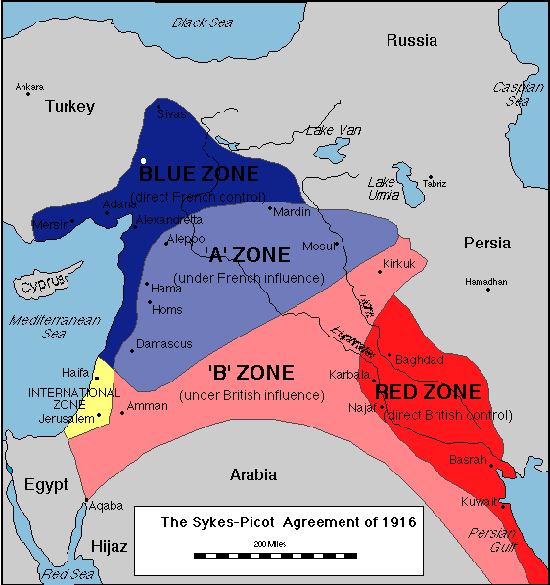How have we come to this mess in the Middle East?
The strange thing is that my mind immediately went to that figure of historical noteriety , Lawrence of Arabia.
It is probably accepted that most kids today wouldn't have a clue who we was, but most of us from the era who actually got taught things other than gender fluidity in school , have heard of this imposing figure. The British gentleman who rode around the desert with his blue eyes and, today, would have had more fans on social media than Taylor Swift.
So who was he?
Lawrence was a British intelligence officer and military advisor who worked with Arab rebels during World War I to fight against the Ottoman Empire, which was an ally of Germany and Austria-Hungary during the First World War.
Colonel Thomas Edward Lawrence, popularly known as Lawrence of Arabia, is a name that means something with both history buffs and moviegoers alike. Lawrence's story is one of adventure, intrigue - the Arab revolt against the Ottoman Empire.
(The Arab Revolt was a military and political campaign during World War I in which Arab forces, led by various Arab leaders and supported by the British and French governments, rebelled against the Ottoman Empire, which was one of the Central Powers in the war. )
He was born on August 16, 1888, in Tremadog, Wales. He spent his early years in Oxford, where he developed a deep love for history, archaeology, and the Middle East. His fascination with the region led him to study its culture, languages, and history, setting the stage for his future adventures.
Lawrence's journey to becoming "Lawrence of Arabia" began during World War I when he joined the British Army's Intelligence Department in Cairo. His knowledge of the Middle East, combined with his linguistic skills and deep understanding of Arab culture, made him an invaluable asset.
In 1916, Lawrence was sent to Arabia to assist the Arab rebels in their fight against the Ottoman Turks, who controlled vast areas of the Arabian Peninsula. Lawrence's leadership and tactical brilliance played a pivotal role in uniting various Arab tribes under a common banner and waging a guerrilla war against the Ottomans.
One of Lawrence's most famous exploits was the capture of Aqaba, a heavily fortified port city on the Red Sea, in 1917. His audacious and unexpected attack, conducted with a small band of Arab fighters, proved to be a turning point in the Arab revolt. The capture of Aqaba cut off the Ottoman supply lines and paved the way for further victories.
Beyond his military accomplishments, Lawrence's ability to bridge cultural gaps and build trust among the Arab tribes was extraordinary. He earned the respect and admiration of figures like Emir Faisal and Sharif Hussein, key leaders of the Arab revolt. His knowledge of Arab culture and his efforts to empower the Arabs in their fight for independence endeared him to the people he worked alongside.
After the war, Lawrence played a significant role in the post-war negotiations that shaped the Middle East. His efforts, however, were marred by the Sykes-Picot Agreement and the Balfour Declaration, which divided the region into arbitrary borders and sowed the seeds of future conflicts.
What was the Sykes Picot Agreement you may ask.
The Sykes-Picot Agreement, officially known as the Asia Minor Agreement, was a secret treaty signed during World War I between two Allied Powers, Great Britain and France, with the assent of Russia. The agreement was negotiated in 1916 and became public knowledge when it was leaked in 1917. It had a profound impact on the post-war political landscape of the Middle East.
Key points of the Sykes-Picot Agreement:
-
Division of Ottoman Territories: The primary aim of the agreement was to plan the division of the Ottoman Empire's territories in the event of its defeat in World War I. These territories included areas in the Middle East, such as present-day Syria, Iraq, Jordan, and parts of Lebanon and Israel/Palestine.
-
Zones of Influence: The agreement divided the regions into separate zones of influence for the British and the French. It also designated an international administration (under the League of Nations) for some areas, including the area under attack today. .

In the aftermath of World War I and the eventual disintegration of the Ottoman Empire, the Middle East saw the implementation of the Sykes-Picot Agreement's provisions, leading to the establishment of British and French mandates and protectorates in the region. The agreement's impact is still felt today, as many contemporary geopolitical issues in the Middle East can be traced back to the boundaries and divisions it imposed.
To be fair, while Lawrence did not directly participate in the negotiations or drafting of the Sykes-Picot Agreement, his actions and promises to Arab leaders during the Arab revolt were at odds with the secret agreements made by the British and French. His involvement indirectly influenced the political landscape of the Middle East and contributed to the complex and often contradictory policies pursued by the Allied Powers during and after World War I.
So what do we make of this today?
Much like trying to place blame on Australian migrants for having dared to be come for a better life. Or castigating convicts for having been sent to Australia for stealing a loaf of bread?
Blame Lawrence of Arabia?
As old mate Joe says, " Come on man! "
Our politicians have much to answer for.
BLOG COMMENTS POWERED BY DISQUS































































